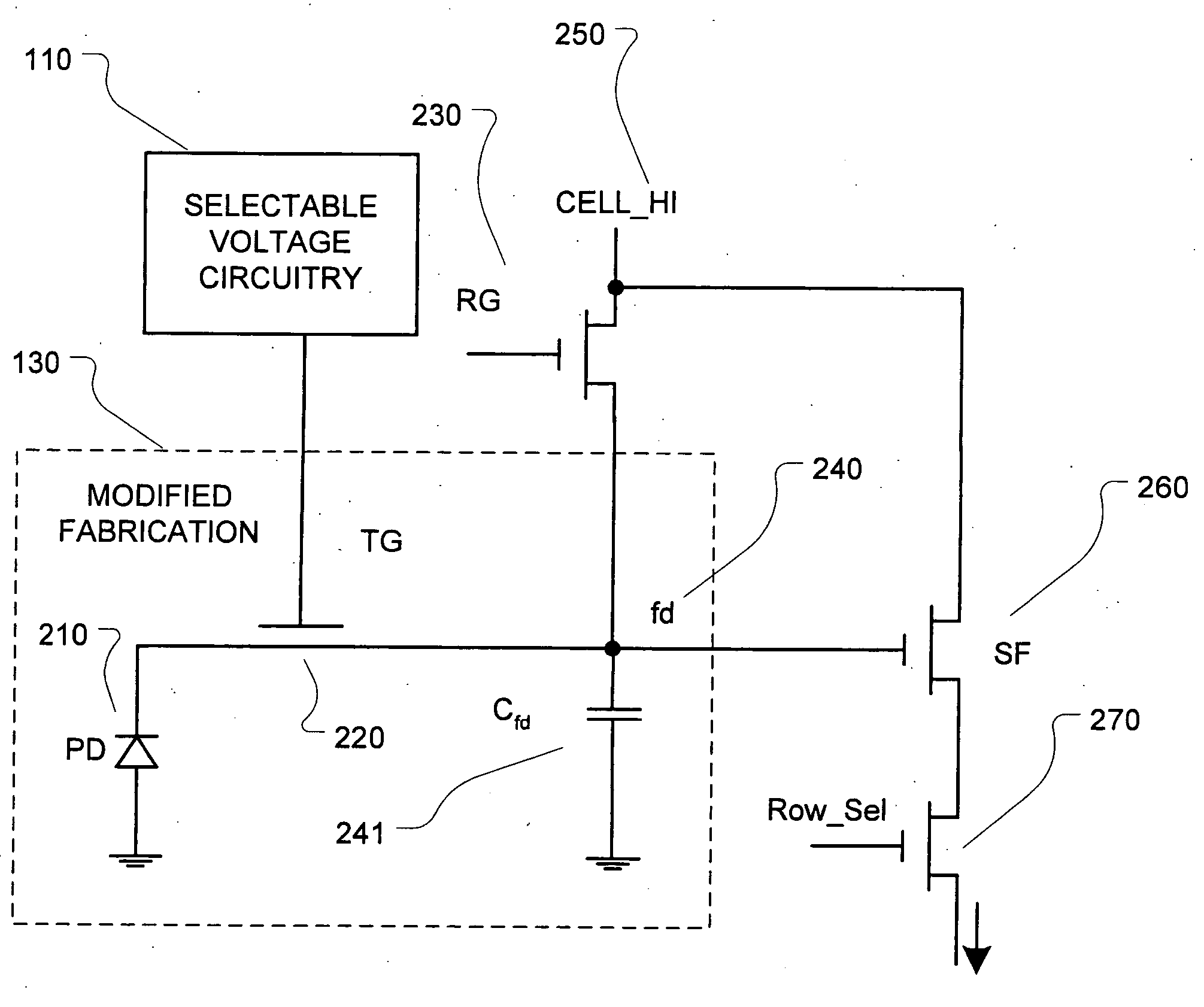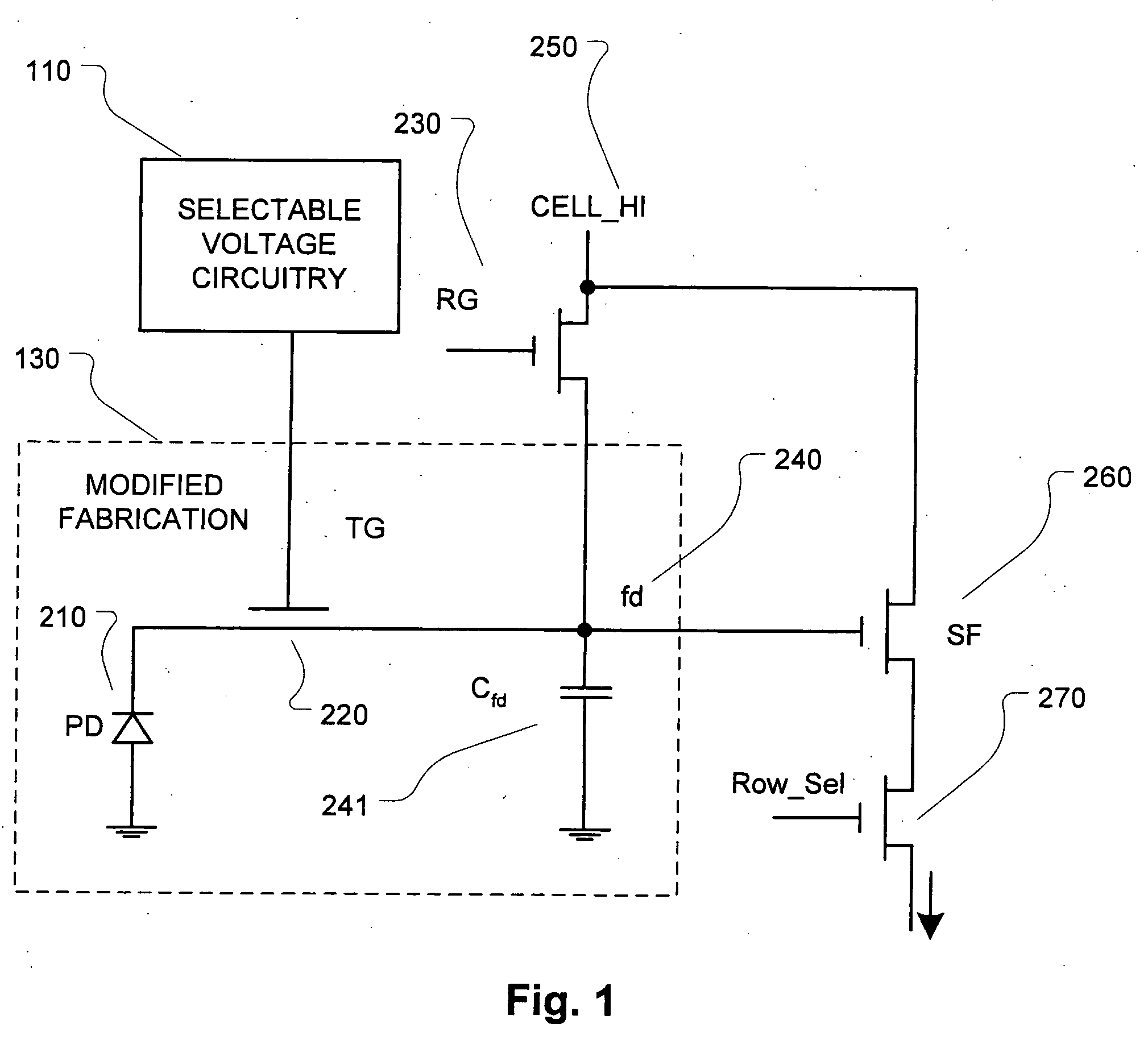Method and apparatus for proximate CMOS pixels
a proximate and pixel technology, applied in the field of image sensors, can solve the problems of low operating voltage, inflexibility, and inconvenient design of cmos process for pixel elements, and achieve the effects of low noise, high performance and low cos
- Summary
- Abstract
- Description
- Claims
- Application Information
AI Technical Summary
Benefits of technology
Problems solved by technology
Method used
Image
Examples
Embodiment Construction
[0047] The pixel as illustrated in FIG. 1 is designed to overcome limitations of the CMOS process and achieve good picture quality levels that are comparable to CCD sensors.
[0048] The pixel consists of a pinned photodiode (PD) 210 as light sensing element, a transfer gate (TG) 220, a floating diffusion 240 (and associated capacitance 241), a MOSFET as reset transistor 230, a second MOSFET as source follower 260, and a third MOSFET as row select transistor 270. The devices which have undergone modified fabrication 130 according to some embodiments include the pinned photodiode (PD) 210, the transfer gate (TG) 220, and the floating diffusion 240.
[0049] The pixel is designed to be built with the CMOS process with additional implantation steps to improve the performance. Only modest positive biasing voltages are required which can easily be provided by a CMOS process without the need for special high voltage devices. The process modifications are in the pixel array and therefore the r...
PUM
 Login to View More
Login to View More Abstract
Description
Claims
Application Information
 Login to View More
Login to View More - R&D
- Intellectual Property
- Life Sciences
- Materials
- Tech Scout
- Unparalleled Data Quality
- Higher Quality Content
- 60% Fewer Hallucinations
Browse by: Latest US Patents, China's latest patents, Technical Efficacy Thesaurus, Application Domain, Technology Topic, Popular Technical Reports.
© 2025 PatSnap. All rights reserved.Legal|Privacy policy|Modern Slavery Act Transparency Statement|Sitemap|About US| Contact US: help@patsnap.com



